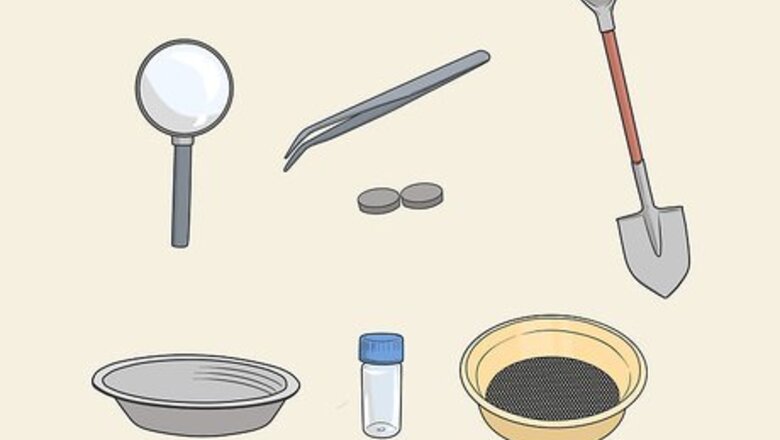
views
Preparing to Hunt for Gold
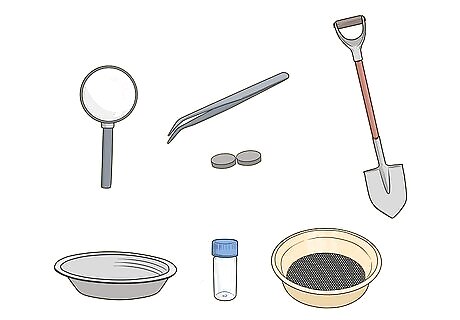
Gather materials for your gold-hunting expedition. You can hunt for gold with a simple gold pan and not much else. However, there are some other items that may make your expedition easier. Some items to pack for your gold-hunting expedition include: Gold pan Shovel Grizzly pan (pan with holes in the bottom for sifting) Magnifying glass Tweezers Small magnet Glass vials to hold gold

Dress appropriately for the weather and location. Wear something warm if the weather will be cold. Dress in layers so you can easily remove them if you become too warm. If the weather will be hot, opt for shorts and a T-shirt. Make sure to bring sunscreen as well to protect any uncovered skin. Some other items you might need include: Rubber gloves Rubber boots Comfortable hiking shoes An extra pair of socks Winter coat or waterproof jacket Sunglasses

Pack snacks, water, and any other items you might need. Hunting for gold can take all day and it can be physically exhausting. Make sure that you bring plenty of water and food to keep you fueled for your gold-hunting activities. Some good options include: Trail mix (dried fruit and nuts) Granola Pretzels Fresh fruit Jerky Thermos of coffee or an energy drink

Research locations where gold has been found before. Your best chance for finding gold nuggets is to go to locations where other people have found gold before. Check online and talk with other people who have experience searching for gold nuggets. Also, check with your national, state or provincial geological survey office for information or maps. You can also check online for maps to old gold mines.Tip: Places with the words “gold” or “golden” in them may be good places to search for gold.
Using a Metal Detector to Find Gold

Purchase a metal detector to make it easier to find gold. Metal detectors are widely available and they make it much easier to find gold nuggets. Purchase a metal detector or build your own before you head out in search of gold nuggets. Get a metal detector that comes with headphones or use your own to make it easier to hear the tones. Make sure that the metal detector you purchase or build can detect gold. There are also some special models of metal detectors available that are extra sensitive to gold.

Learn how to use the metal detector properly. Read the instructions that came with your metal detector. If you purchase the metal detector in a store, you could also ask a salesperson to give you a demonstration before you leave. You could also watch videos online for your specific type of metal detector.
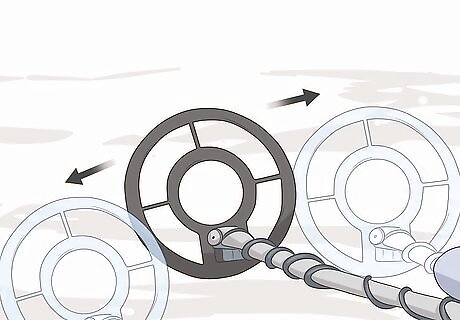
Sweep your metal detector from side-to-side just above the ground. Keep the metal detector low and sweep it gently from side to side. Avoid sweeping in a pendulum pattern high off the ground or you will miss sections of the ground in your search.Tip: Try going metal detecting with a friend or family member. This way you can cover twice as much ground and ensure that you won’t miss any spot where gold might be hiding.
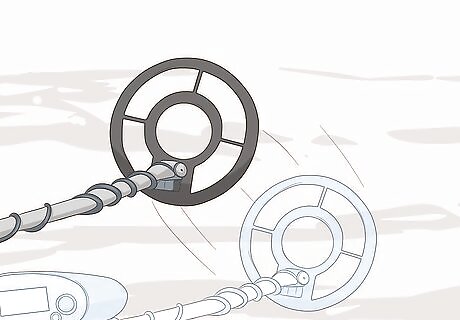
Perform overlapping sweeps to ensure full-coverage of an area. It’s important to double back and check the right beside the areas where you have just swept. Aim to overlap where you swept on the first pass by about 1 ft (0.30 m) to ensure that you don’t miss anything. If you do not slightly overlap your sweeps, then you may miss small deposits between swept areas. Don’t stop searching an area until you have covered every section of it.
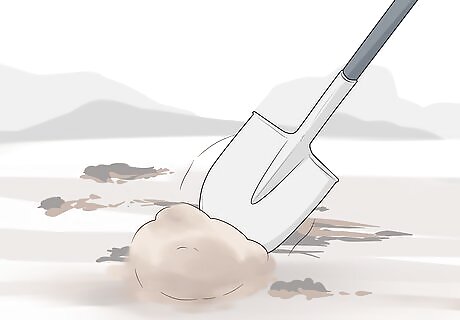
Dig for gold in areas where your metal detector beeps. Use as rake to remove and loosen soil in layers or a shovel to dig deeper in the ground. If your metal detector has a feature that tells you how deep to dig, then dig to this level in the ground where the metal detector is beeping. If you find a gold nugget, keep searching deeper and in the surrounding areas. Gold nuggets are often found in patches, so there might be more!
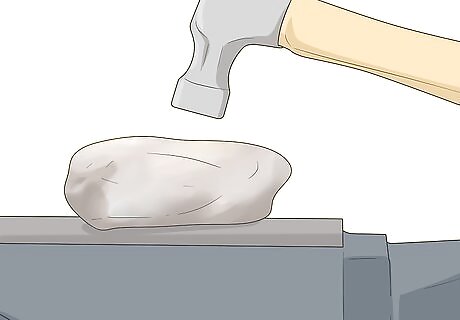
Use a hammer and anvil to break up large rocks that may contain gold. If you find a rock that your metal detector indicates may have gold in it, place it on an anvil and hit it with a hammer. You may have to do this several times to break up the rock if it’s large. Make sure to wear goggles and heavy leather gloves when you do this.
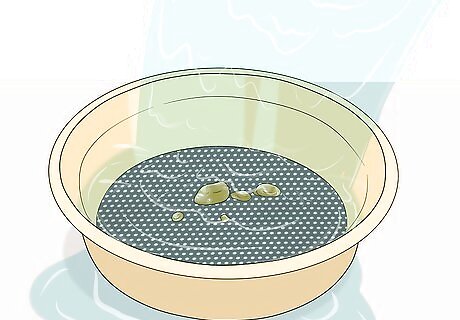
Place smaller pieces of gold in a sifting pan and rinse with water. If you dig up small pieces of gold, rinse them in a sifting pan to remove dirt and debris. Pour excess water over the grooved edge of the pan slowly. This will help to ensure that you do not lose any pieces of gold that may be in the soil. Use a blue sifting pan to make it easier to spot any gold that you find.
Panning for Gold
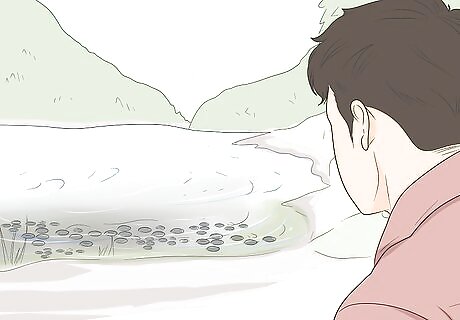
Target rock outcroppings to find gold that is visible above ground. Look in the soil and in any water sources, such as shallow creeks and streams, below the outcropping. If any gold washed away from the rock outcropping, it may have embedded in the soil since gold is heavier than other minerals. Granite, shale, and gneiss often contain gold, so try to target outcroppings made from these types of rocks.
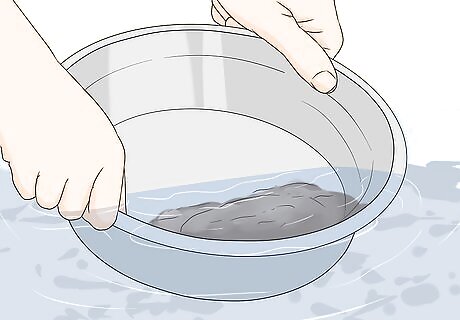
Pan for gold in shallow areas of rivers and streams. Look for a shallow area of a river or stream, such as near the edges of the river. Dip your pan into the soil near the edge of the river and gently swish and sift it to remove the water. Gold is heavy, so it will sink to the bottom of the pan if there’s any in it. After the water is gone, check to see if the pan contains any gold. Make sure to use a blue or green-colored gold pan. This will make it easier to spot any smaller pieces of gold that you find.

Check the areas around old mines without entering them. Never enter an old mine as this can be very dangerous. However, you can search the areas around an old gold mine to look for gold. Check the roads leading to and from the mine as well as any nearby streams or rock outcroppings. If there’s any old equipment leftover from when the mine was being actively used, check around there as well.Warning: If you plan to look for gold nuggets on a piece of private property, make sure that you get written consent from the property owners before you begin.

Dig under pebbles on the edges of rivers and streams. Gold may lie just underneath pebbles along the edges of a river or stream as well. Gold is heavier than other types of minerals, so it sinks down and it might be in the soil just under the pebbles. Try checking along the edges of a river bed or stream after a flood or heavy rain. You may have more luck finding gold after a heavy rainfall has shifted everything around.



















Comments
0 comment